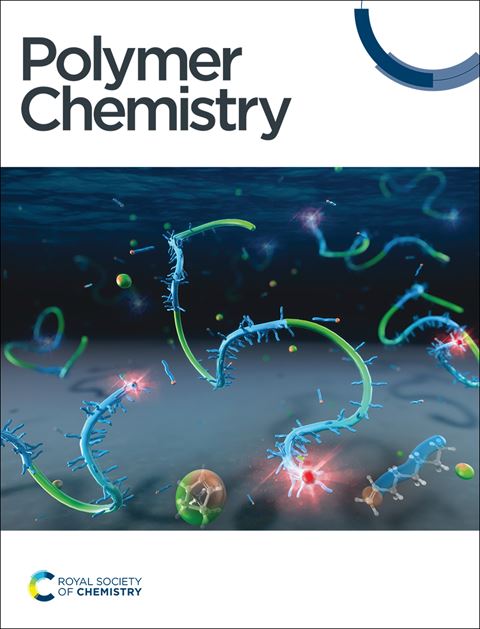Stereoregular cyclic poly(3-hydroxybutyrate) enabled by catalyst-controlled tacticity and topology†
IF 3.9
2区 化学
Q2 POLYMER SCIENCE
引用次数: 0
Abstract
Chemocatalytic routes to poly(3-hydroxybutyrate) (P3HB), a natural biodegradable polyester that has long been considered as a more sustainable alternative to non-(bio)degradable polyolefins, can deliver P3HB materials with catalyst-controlled diverse stereomicrostructures for tunable properties. P3HB topology brings in another way of modulating its properties, but selective synthesis of cyclic P3HB is challenging; yet it is harder to simultaneously control both tacticity and topology. Here we introduce an effective strategy to selectively synthesize cyclic isotactic or syndio-rich P3HB by using bulky C2-symmetric salen-ligated metal catalysts bearing an initiating ligand that is also a good leaving group, and a relatively long and ionic metal–polymer bond, both facilitating chain end-to-end cyclization. The resulting cyclic P3HB topology has been extensively characterized and differentiated from its linear counterpart, including direct visualization. When compared to its linear counterpart, cyclic P3HB of both stereomicrostructures shows noticeably superior properties, including higher melting and decomposition temperatures, better processability, and higher overall mechanical toughness.

由催化剂控制的结构和拓扑结构使能的立体规则环状聚(3-羟基丁酸酯)
聚(3-羟基丁酸酯)(P3HB)是一种天然的可生物降解聚酯,长期以来一直被认为是不可(生物)降解聚烯烃的可持续替代品,化学催化途径可以提供具有催化剂控制的多种立体微观结构的P3HB材料,具有可调节的性能。P3HB拓扑结构带来了另一种调制其性质的方法,但选择性合成环状P3HB是具有挑战性的;然而更难的是同时控制战术和拓扑结构。本文介绍了一种选择性合成环等规或富同构P3HB的有效策略,该策略使用体积较大的c2对称盐链金属催化剂,其初始配体也是一个良好的离去基,并且具有相对较长的离子型金属-聚合物键,两者都有利于链端到端环化。由此产生的环状P3HB拓扑结构已被全面表征,并与其线性对应物区分开来,包括直接可视化。与线性P3HB相比较,两种立体组织的环状P3HB表现出更高的性能,包括更高的熔化和分解温度、更好的加工性和更高的整体机械韧性。
本文章由计算机程序翻译,如有差异,请以英文原文为准。
求助全文
约1分钟内获得全文
求助全文
来源期刊

Polymer Chemistry
POLYMER SCIENCE-
CiteScore
8.60
自引率
8.70%
发文量
535
审稿时长
1.7 months
期刊介绍:
Polymer Chemistry welcomes submissions in all areas of polymer science that have a strong focus on macromolecular chemistry. Manuscripts may cover a broad range of fields, yet no direct application focus is required.
 求助内容:
求助内容: 应助结果提醒方式:
应助结果提醒方式:


